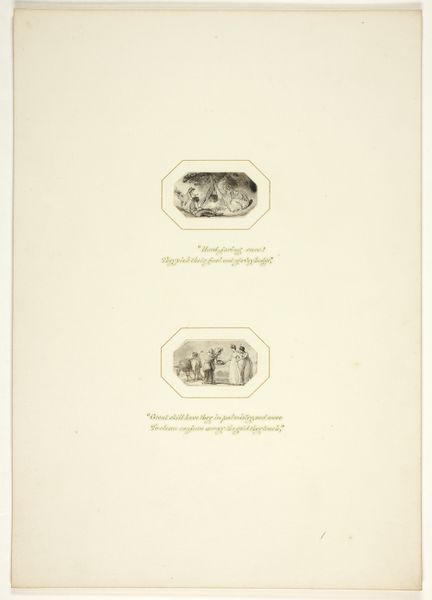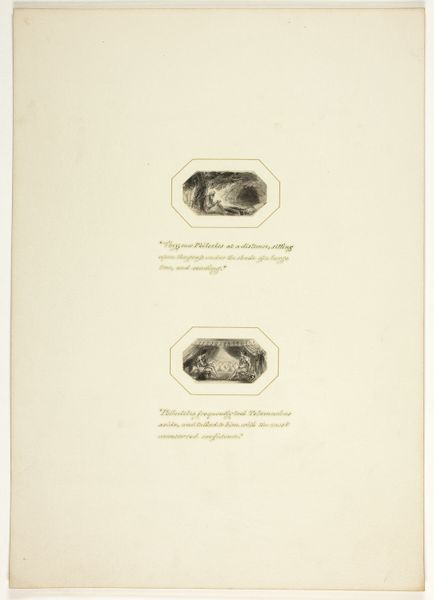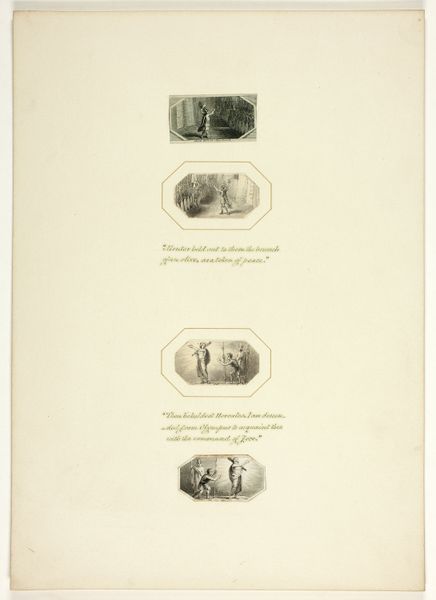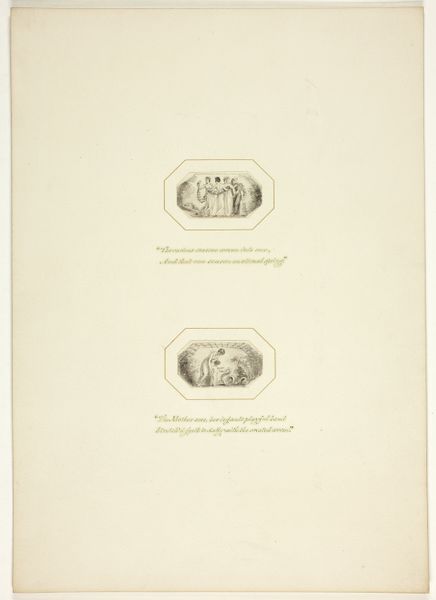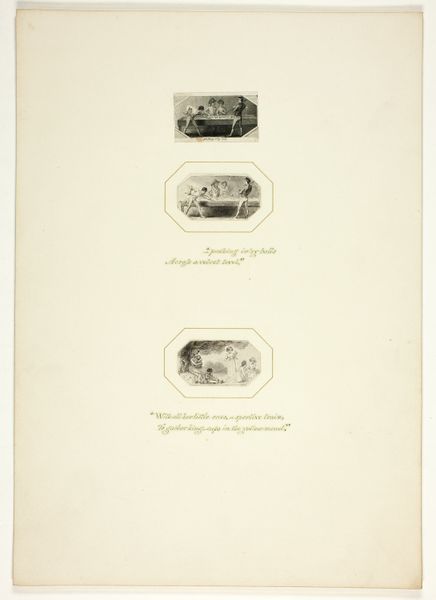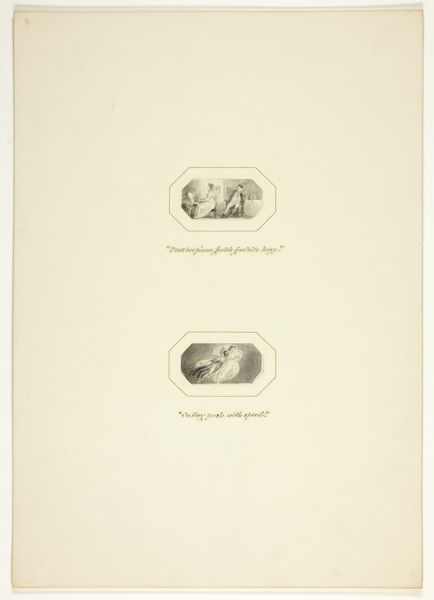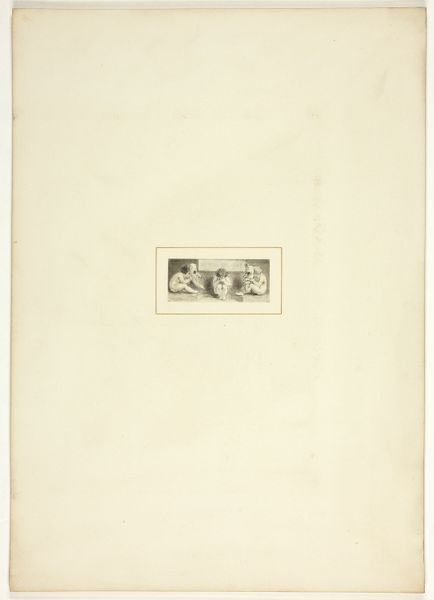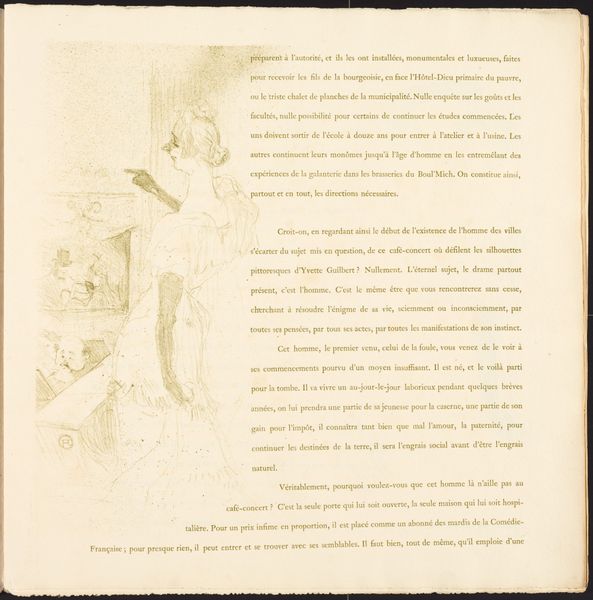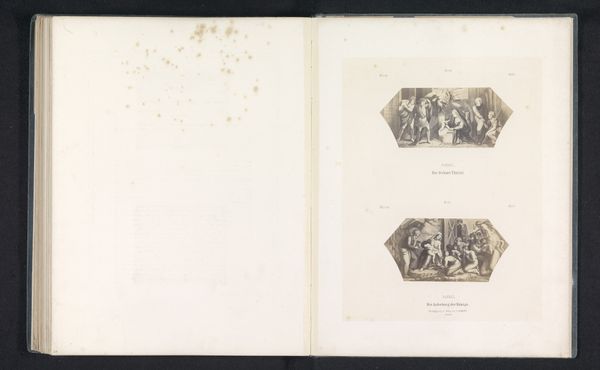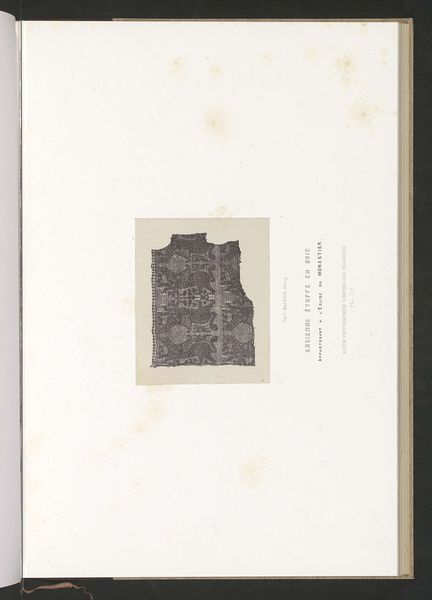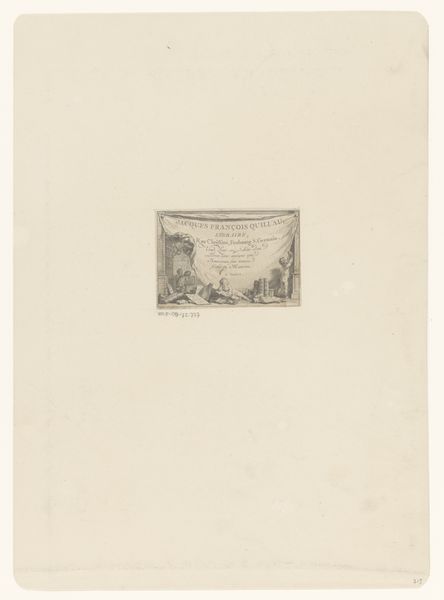
drawing, print, etching, paper, pencil, engraving
#
pencil drawn
#
drawing
# print
#
etching
#
old engraving style
#
paper
#
romanticism
#
pencil
#
engraving
Dimensions: 27 × 50 mm
Copyright: Public Domain
Editor: So, this is Thomas Stothard's "Study for a plate from The Task," created around 1800. It's a drawing with pencil and etching on paper. The two vignettes feel almost like looking at scenes from a play; a private, domestic sphere contrasting with an active, outdoor scene. What do you see in this piece? Curator: What I see is Stothard engaging with the societal expectations of his time. Consider the historical context: late 18th, early 19th century Britain, where notions of domesticity and public life were deeply gendered. The top vignette shows a woman tending to someone, reinforcing her nurturing role within the home, while the lower one depicts social engagement. Stothard, like many artists of the period, reflects and possibly reinforces these norms. How might these seemingly simple scenes play into a larger political landscape of identity? Editor: That's interesting, I hadn't thought about the gendered aspect so directly. The juxtaposition does seem intentional now that you mention it, with one scene representing private life and the other some form of public interaction. But what about the actual poem, "The Task"? Curator: Indeed! The poem, by William Cowper, explores themes of nature, society, and the self, all through a domestic lens. Stothard's illustrations were meant to visualize Cowper's verses. Therefore, aren't these illustrations subtly negotiating a space for women, or maybe critiquing its limitations by portraying idealized roles dictated by societal constraints? It prompts the question of whether Stothard, consciously or unconsciously, engaged with the complexities of gender and class structures embedded within these narratives. Editor: That definitely gives me a lot to think about! It changes how I initially perceived this piece. I'm no longer just looking at charming scenes; it's like these drawings open up to reveal the politics embedded in everyday life. Curator: Precisely. This is why situating art within historical and social contexts allows us to excavate the layered meanings and dialogues, even in seemingly simple illustrations. We unveil narratives beyond the aesthetic.
Comments
No comments
Be the first to comment and join the conversation on the ultimate creative platform.
